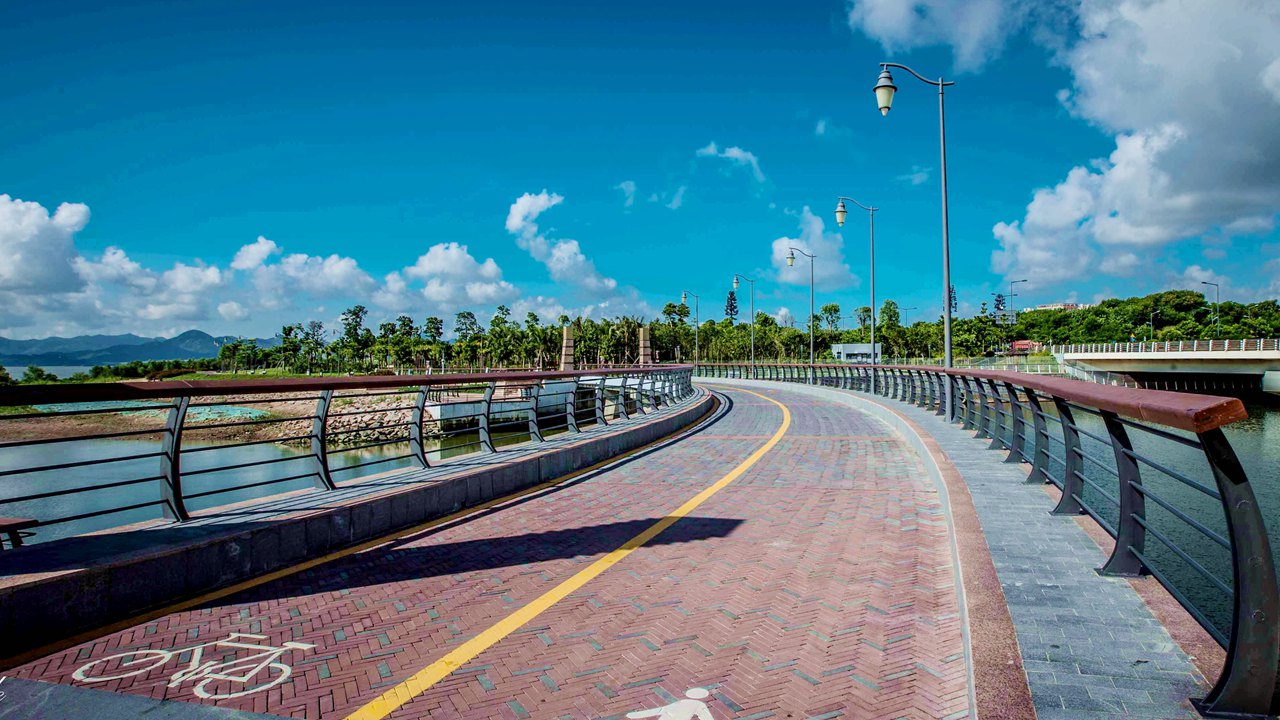Shenzhen plans bicycle-only roads
Writer: Han Ximin | Editor: Holly Wang | From: Shenzhen Daily

A bicycle lane in Shenzhen Bay Park. File photo
In a move to build a bicycle-friendly city, the city is trying to create a 393-km bicycle commuting network backboned by six bicycle express roads and 12 bicycle trunk roads in the coming years.
According to the latest plan on bicycle transport development released Monday by the Shenzhen transport bureau on its official website, http://jtys.sz.gov.cn, seeking public suggestions, the city will start planning cross-region bicycle roads that link Kuichong and Dapeng, Shekou and Liuxiandong, Futian and Luohu districts, in addition to cross-district roads between Longhua and Futian, and Longhua and Nanshan.
Additionally, the city will build bicycle lanes along the coast, and around Longhua greenway, Guangming greenway and the water bodies and mountains in Bao’an District.
Through traffic improvement and the construction of facilities linking Metro stations, the city will build at least 300 km of bicycle lanes. The bicycle lanes will cover 70 percent of the city’s roads by 2025 and share 10 percent of public transport ridership.
The move aims to satisfy the needs of residents for short commutes, leisure and sports, and attract short-trip car drivers to turn to bicycles.
To become a bicycle-friendly city, Shenzhen will implement strategies from five perspectives, including reconstruction of the backbone network, increasing the number of parking facilities, ensuring rider safety, introducing diversified bicycle services and unveiling bicycle-related policies.
According to the plan released earlier, the roadway linking Longhua and Futian will be built along the Meiguan and Huanggang roads and connect Bijia Hill and Lianhua Hill at its ends. The independent bike roads will be either elevated or at ground-level, depending on the situation, and link major residential, business and office clusters, checkpoints, and railway or Metro stations. The ground-level bike roads will be separated from other lanes by fences or greenery belts.
The public can give suggestions by emailing zzc_zzb@jtys.sz.gov.cn or sending a letter to the Shenzhen Roads and Hubs Management and Control Center, Room 1617, 16 Zizhu No. 7 Road, Zhuzilin, Futian District, by the Feb. 13 deadline.
At present, cycling accounts for 8 percent of public commuting, lagging behind the city’s development. By the end of 2018, the city had 1,440 kilometers of bicycle lanes, about 11 percent of the length of urban roads, which was far below the percentages of 95 and 90 in Beijing and Shanghai, respectively. In Shenzhen, 80 percent of bicycle lanes are shared by pedestrians without separating barriers.
Bicycles have advantages for the distances between 0.5 and 5 kilometers. With the popularity of shared bikes, more people, especially young people, want to ride bikes to work.
The daily ridership of shared bikes in 2018 was 1.6 million and the average trip was about 1.5 kilometers. Seventy percent of users were between 21 and 40 years old and more than half of them cycled for their commutes during morning and evening rush hours.
Last May, Beijing opened its first bicycle-only lane near Longze Metro Station. The 6.5-kilometer road is expected to ease traffic congestion in the area between Huilongguan, a densely populated community in the northern part of the city, and Shangdi, where a large number of high-tech companies are located. It takes around 30 minutes on average to cycle from Huilongguan to Shangdi. Due to heavy traffic, it takes more than 40 minutes, and sometimes even one hour, to commute by subway during rush hour, because people cannot get into the crowded subway station.
Cycling is a common mode of transport in the Netherlands, where 36 percent of the people list bicycles as their most frequent mode of transport on a typical day, as opposed to the car, which accounts for 45 percent, and public transport with 11 percent. Cycling has a modal share of 27 percent nationwide.